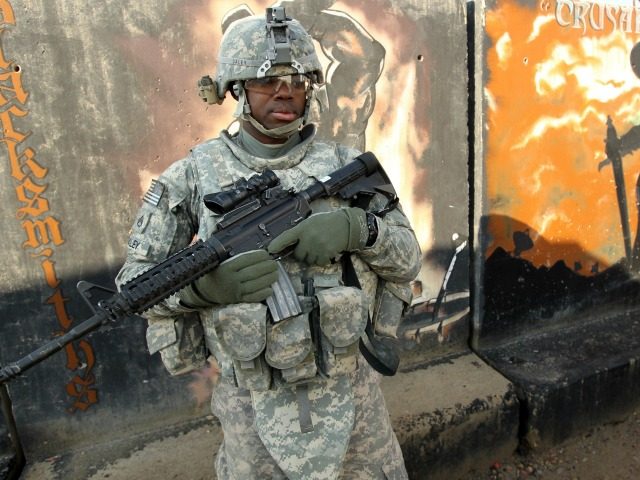Force management levels set by President Barack Obama for the ongoing wars in Iraq, Syria, and Afghanistan have induced the Pentagon to increasingly depend on contractors, as the number of troops it can deploy is strictly capped.
The increased use of contractors in combat zones may “undermine U.S. policy objectives and threaten the safety of U.S. forces” given the Pentagon’s “long-standing challenges in overseeing contractors in deployed environments, and the failure to manage contract support effectively,” says Cary Russell, director of military operations and warfighter support at the Government Accountability Office (GAO), a congressional watchdog.
“Without an adequate number of trained oversight personnel DOD could not be assured that contractors could meet contract requirements efficiently and effectively,” he adds.
Russell made those observations in written testimony prepared for hearing on force management levels held by the House Armed Services Subcommittee on Oversight and Investigations on Thursday.
The executive branch has imposed force management levels since at least since the Vietnam War, explained Russell.
Driven in part by troop caps, the use of contractors has become so prevalent in the U.S. Department of Defense (DOD) that some components of the department may not even know how many contractors it is currently employing.
Russell testifies:
In a force management level-constrained environment, DOD relies on contractors to support a wide range of military operations and free up uniformed personnel to directly support mission needs. During operations in Afghanistan and Iraq, contractors played a critical role in supporting U.S. troops with the number of contractor personnel sometimes exceeding the number of deployed military personnel. According to DOD, the level of contracted support has exceeded that required in previous wars, and this level is not expected to change in future contingency operations.
President Obama has set the force management level, also known as FML, for Afghanistan at 9,800 and for Iraq and Syria at 5,262, according to the GAO.
Pentagon contractors have been increasingly asked to carry out inherently military functions.
“DOD has used contractors as a force multiplier, and with a limited force management level, such as in Iraq, contractors have become an increasingly important factor in operations,” writes Russell.
In his new book, American Commander: Serving a Country Worth Fighting for and Training the Brave Soldiers Who Lead the Way, Rep. Ryan Zinke (R-MT), the first Navy SEAL combat veteran to be elected to the U.S. Congress, wrote that the Pentagon is “overweight,” particularly due to its contractor diet.
He suggested DOD may not even know exactly how many contractors it is currently employing, noting that U.S. Special Operations Command has been unable to provide Congress with an accurate count of its contractors.
Besides an increased reliance on contractors, the current force management levels have driven the U.S. military to increase engagement with security forces of partner nations, boost its reliance on air power, and increase the pace of U.S. Special Operations Deployments, which has affected readiness, retention, and morale, according to the GAO.
While testifying alongside Russell on Thursday, two retired U.S. generals denounced the force management level process as inflexible.
The generals noted that once officials decide on a troop cap, it is difficult to increase the number of forces even when such a change is warranted by conditions on the ground.
“When activities are driven by a number rather than by the mission, then I think we’ve got things out of whack and out of priority,” testified retired Army Gen. Carter Ham, an Iraq war veteran who served as commander of U.S. Africa Command, U.S. Army Europe and the 1st Infantry Division, among many other assignments.
“Once a force management level is decided upon by the appropriate civilian authority, there ought to be sufficient flexibility to adjust that based on changing conditions on the ground and I think in my experience that system is pretty cumbersome,” he told lawmakers. “From a military standpoint, it’s been more difficult I think to adjust the force management level.”
The general added that as a result military commanders have opted to use contractors rather than attempt to change the force management level.
Retired Army Lt. Gen. Jim Dubik, Ph.D., a former commander of Multinational Security Transition Command-Iraq who testified alongside Gen. Ham, noted that the FML decision process is “very slow” to adapt to the constantly changing conditions of a war zone.
“The pace of what happens in theater is much quicker than the pace of decision making [in Washington, D.C.] and the result is often either having [contracted] people with the wrong skill set or having insufficient numbers of people,” testified Gen. Dubik.
In addition to contractors, the Pentagon also relies on personnel on temporary duty (TDY) to boost the number of troops during contingency operations.

COMMENTS
Please let us know if you're having issues with commenting.